Mechanisms of chemotherapeutic resistance and the application of targeted nanoparticles for enhanced chemotherapy in colorectal cancer
- PMID: 35953863
- PMCID: PMC9367166
- DOI: 10.1186/s12951-022-01586-4
Mechanisms of chemotherapeutic resistance and the application of targeted nanoparticles for enhanced chemotherapy in colorectal cancer
Abstract
Colorectal cancer is considered one of the major malignancies that threaten the lives and health of people around the world. Patients with CRC are prone to post-operative local recurrence or metastasis, and some patients are advanced at the time of diagnosis and have no chance for complete surgical resection. These factors make chemotherapy an indispensable and important tool in treating CRC. However, the complex composition of the tumor microenvironment and the interaction of cellular and interstitial components constitute a tumor tissue with high cell density, dense extracellular matrix, and high osmotic pressure, inevitably preventing chemotherapeutic drugs from entering and acting on tumor cells. As a result, a novel drug carrier system with targeted nanoparticles has been applied to tumor therapy. It can change the physicochemical properties of drugs, facilitate the crossing of drug molecules through physiological and pathological tissue barriers, and increase the local concentration of nanomedicines at lesion sites. In addition to improving drug efficacy, targeted nanoparticles also reduce side effects, enabling safer and more effective disease diagnosis and treatment and improving bioavailability. In this review, we discuss the mechanisms by which infiltrating cells and other stromal components of the tumor microenvironment comprise barriers to chemotherapy in colorectal cancer. The research and application of targeted nanoparticles in CRC treatment are also classified.
Keywords: Chemotherapeutic resistance; Colorectal cancer; Targeted nanoparticles.
© 2022. The Author(s).
Conflict of interest statement
The authors declare that they have no competing interests.
Figures



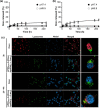
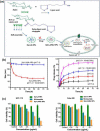
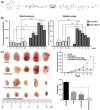

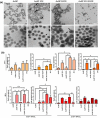
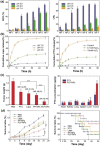
Similar articles
-
Targeted nanoparticles for colorectal cancer.Nanomedicine (Lond). 2016 Sep;11(18):2443-56. doi: 10.2217/nnm-2016-0194. Epub 2016 Aug 16. Nanomedicine (Lond). 2016. PMID: 27529192 Free PMC article. Review.
-
Research advances in nanomedicine applied to the systemic treatment of colorectal cancer.Int J Cancer. 2023 Mar 1;152(5):807-821. doi: 10.1002/ijc.34256. Epub 2022 Sep 8. Int J Cancer. 2023. PMID: 35984398 Review.
-
Tumor Abnormality-Oriented Nanomedicine Design.Chem Rev. 2023 Sep 27;123(18):10920-10989. doi: 10.1021/acs.chemrev.3c00062. Epub 2023 Sep 15. Chem Rev. 2023. PMID: 37713432 Review.
-
Advanced targeted therapies in cancer: Drug nanocarriers, the future of chemotherapy.Eur J Pharm Biopharm. 2015 Jun;93:52-79. doi: 10.1016/j.ejpb.2015.03.018. Epub 2015 Mar 23. Eur J Pharm Biopharm. 2015. PMID: 25813885 Review.
-
Diatom-Based Nanomedicine for Colorectal Cancer Treatment: New Approaches for Old Challenges.Mar Drugs. 2023 Apr 26;21(5):266. doi: 10.3390/md21050266. Mar Drugs. 2023. PMID: 37233460 Free PMC article. Review.
Cited by
-
Challenges in validation of combination treatment strategies for CRC using patient-derived organoids.J Exp Clin Cancer Res. 2024 Sep 11;43(1):259. doi: 10.1186/s13046-024-03173-x. J Exp Clin Cancer Res. 2024. PMID: 39261955 Free PMC article. Review.
-
NAD+/SIRT1 pathway regulates glycolysis to promote oxaliplatin resistance in colorectal cancer.World J Gastroenterol. 2025 Mar 21;31(11):100785. doi: 10.3748/wjg.v31.i11.100785. World J Gastroenterol. 2025. PMID: 40124268 Free PMC article.
-
Application of Nanoparticles in the Diagnosis and Treatment of Colorectal Cancer.Anticancer Agents Med Chem. 2024;24(18):1305-1326. doi: 10.2174/0118715206323900240807110122. Anticancer Agents Med Chem. 2024. PMID: 39129164 Free PMC article. Review.
-
An updated landscape on nanopharmaceutical delivery for mitigation of colon cancer.Naunyn Schmiedebergs Arch Pharmacol. 2025 Mar;398(3):2107-2125. doi: 10.1007/s00210-024-03482-0. Epub 2024 Oct 3. Naunyn Schmiedebergs Arch Pharmacol. 2025. PMID: 39361171 Review.
-
Monocyte/Macrophage-Mediated Transport of Dual-Drug ZIF Nanoplatforms Synergized with Programmed Cell Death Protein-1 Inhibitor Against Microsatellite-Stable Colorectal Cancer.Adv Sci (Weinh). 2024 Oct;11(38):e2405886. doi: 10.1002/advs.202405886. Epub 2024 Aug 5. Adv Sci (Weinh). 2024. PMID: 39101234 Free PMC article.
References
-
- Shaukat A, et al. Endoscopic recognition and management strategies for malignant colorectal polyps: recommendations of the US multi-society task force on colorectal cancer. Gastroenterology. 2020;159(5):1916–1934.e2. - PubMed
-
- Merchant J, et al. Concepts and prospects of minimally invasive colorectal cancer surgery. Clin Radiol. 2021;76(12):889–895. - PubMed
Publication types
MeSH terms
Substances
Grants and funding
LinkOut - more resources
Full Text Sources
Medical
Research Materials

